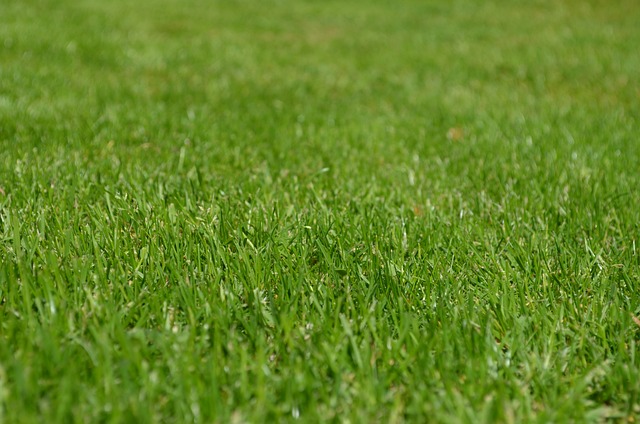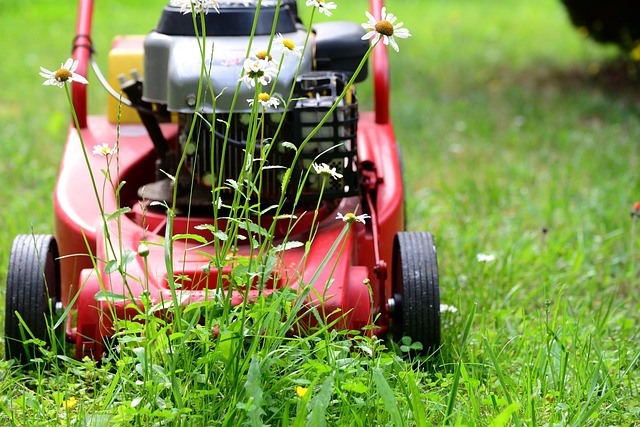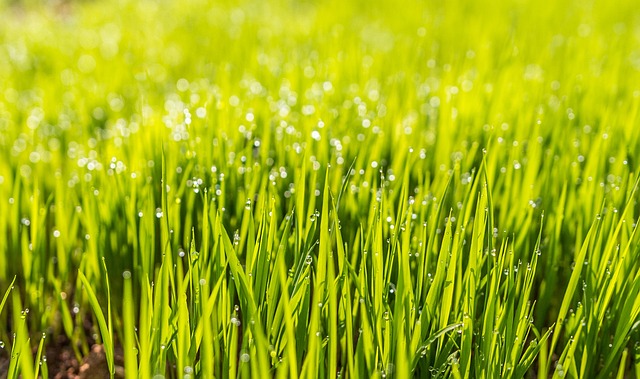Title: “Optimizing Water Usage: A Comprehensive Guide to Installing and Maintaining an Effective Irrigation System for Your Lawn”
Whether you’re a seasoned gardener or new to lawn care, the right irrigation system can make all the difference in maintaining a lush, green landscape. This article delves into the essentials of installing an efficient irrigation system tailored to your unique property and lawn care needs. We’ll explore key components that ensure optimal water distribution, offer a step-by-step guide for installation, and provide maintenance tips to keep your landscaping irrigated effectively over time. By understanding how to assess your property and select the most suitable irrigation system type, you can conserve water, reduce costs, and enhance the beauty of your outdoor spaces with ease.
- Assessing Your Property for Optimal Irrigation System Design
- Selecting the Right Irrigation System Type for Your Lawn Care Needs
- Step-by-Step Guide to Installing a Residential Irrigation System
- Key Components and Their Roles in Efficient Lawn Watering Systems
- Tips for Maintaining and Upgrading Your Landscaping Irrigation System Over Time
Assessing Your Property for Optimal Irrigation System Design

When planning the installation of an irrigation system, a thorough assessment of your property is paramount for an optimal design that caters to both the aesthetic needs of lawn care and landscaping. Understanding the unique characteristics of your land, such as its topography, soil composition, water pressure, and sun exposure, allows for tailored solutions that maximize irrigation efficiency. Evaluate existing landscapes, noting areas prone to erosion or with compacted soils that may require different watering needs than lush, open lawns. Identify slopes and low-lying areas to ensure proper drainage and to prevent water waste. By leveraging advanced technologies like moisture sensors and weather-based controllers, your irrigation system can be fine-tuned to conserve water while maintaining a healthy and vibrant landscape, thereby enhancing the overall curb appeal of your property through effective lawn care.
Incorporating a well-designed irrigation system into your lawn care and landscaping regimen not only promotes plant health but also supports sustainable practices. It’s essential to consider the layout of your outdoor spaces, including garden beds, trees, and turf areas, to distribute water evenly and avoid over or under-watering any specific zone. Additionally, selecting the appropriate irrigation components, such as drip lines for gardens and rotary nozzles for lawns, ensures that each part of your landscape receives the precise amount of water it needs. By investing in a professional assessment and design for your irrigation system, you can achieve a balance between efficiency and effectiveness, resulting in a lush, thriving outdoor environment that is both beautiful and sustainable.
Selecting the Right Irrigation System Type for Your Lawn Care Needs

When considering an irrigation system for your lawn care needs, it’s crucial to evaluate the specific characteristics of your landscape to select the most appropriate type. Factors such as soil composition, local climate patterns, plant species, and water availability should guide your choice. For instance, drip or micro-irrigation systems are highly efficient for areas with sandy soils that drain water quickly, ensuring that plants receive consistent moisture without waste. On the other hand, sprinkler systems are ideal for larger lawns where overhead watering is necessary to penetate through denser soils or to reach tall vegetation effectively. In both cases, landscaping design plays a significant role; a well-planned irrigation system integrates seamlessly with your yard’s layout, optimizing water usage and promoting healthy growth for your lawn.
Advancements in smart irrigation technology have further enhanced lawn care maintenance. These systems can be programmed to operate at optimal times, conserving water and energy by utilizing weather forecasts and soil moisture sensors. By tailoring the irrigation schedule to the actual needs of your lawn, these systems minimize overwatering or underwatering, ensuring that your landscaping thrives throughout the growing season. Investing in a smart irrigation system not only supports sustainable practices but also contributes to cost savings by reducing water bills and potential lawn care issues associated with improper watering.
Step-by-Step Guide to Installing a Residential Irrigation System

Embarking on the installation of a residential irrigation system can significantly enhance your lawn care and landscaping efforts, ensuring a lush, green garden with minimal manual watering. The process begins with careful planning to determine the optimal layout for your sprinkler heads based on your property’s unique features, including the size and shape of your yard, plant species, and sun exposure. This phase involves selecting appropriate zone configurations within your irrigation system, which will allow for targeted watering of specific areas, maximizing efficiency and water conservation.
Once the layout is finalized, the next step is to mark out the area where the irrigation lines will be laid. Use stakes and garden hoses to outline the trenches, ensuring they are positioned to cover all zones effectively without overlapping or causing wasteful water runoff. After marking, it’s time to excavate the trenches. Use a shovel or a trencher to dig along the marked lines, taking care not to damage existing underground utilities. Lay the mainline polyethylene pipes into the trenches, connecting them with fittings as you go. For each zone, branch off from the mainline with lateral lines, which will terminate at the individual sprinkler heads. Secure the pipes along the ground to prevent movement that could cause leaks or damage over time.
Next, install the emitters or sprinkler heads at the end of each lateral line, ensuring they are evenly spaced and aligned with the planned watering zones. Choose the type of emitter or sprinkler head based on the specific needs of your lawn or garden beds. After placing the emitters, gently backfill the trenches with soil, tamping it down to eliminate air pockets that could lead to leaks. Connect the system to your home’s water supply, making sure all connections are watertight and secure. Finally, program your timer or controller to activate the irrigation system at optimal times for watering, based on local weather conditions and watering restrictions.
To finalize the installation, perform a thorough check of the entire system. Manually run each zone to ensure proper coverage and absence of leaks. Adjust any sprinkler heads as necessary to avoid overspray or under-watering. With your new irrigation system in place, you can enjoy the benefits of automated lawn care and landscaping maintenance, promoting a healthy and vibrant outdoor space with less effort and water usage. Regular maintenance checks will help ensure your system operates at peak performance for years to come.
Key Components and Their Roles in Efficient Lawn Watering Systems

Tips for Maintaining and Upgrading Your Landscaping Irrigation System Over Time

Regular maintenance and occasional upgrades are key to maintaining an efficient and effective irrigation system for your lawn care and landscaping needs. To ensure optimal performance, it’s advisable to conduct routine checks and clean filters and strainers regularly to prevent clogging. This not only prolongs the lifespan of your system but also conserves water. Additionally, inspecting the entire network, including pipes, valves, sprinkler heads, and emitters, for leaks or malfunctions is crucial. Replace any damaged components promptly to avoid waste and ensure even distribution of water across your lawn.
As technology advances, consider integrating smart controllers into your irrigation system. These devices can adjust watering schedules based on real-time weather data, significantly reducing water usage without compromising the health of your turf. Moreover, evaluate the irrigation system’s layout periodically to ensure it aligns with the evolving landscape design and plant needs. If your lawn care and landscaping goals have shifted, adjust the system accordingly, perhaps by adding drip lines for new shrubbery or rerouting spray heads to accommodate newly planted garden beds. Regular upkeep and thoughtful enhancements will keep your irrigation system running efficiently, ensuring a lush, healthy landscape year-round.






